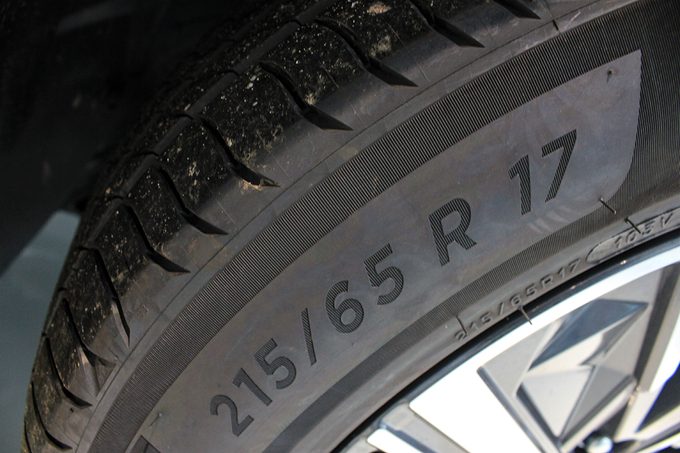Think those numbers on tires don’t matter? They can tell you more than you’d expect. Here’s why it's essential for every car owner to know.

Here’s What Those Numbers on Your Tires Mean

Have you ever taken a close look at your tires? If so, you’ve probably noticed a series of numbers and letters printed along the sidewalls. What exactly do they mean, and why are they there in the first place? Well, turns out, those numbers on tires are more than just a weird car feature—they serve a key purpose.
Ahead, we’ll explain what those numbers mean and how they can help you choose the right tires with confidence.
Get Reader’s Digest’s Read Up newsletter for more fun facts, travel, tech, cleaning and humor all week long.
What do those numbers on tires mean?
Each number and letter on your tires means a different thing. Some indicate tire type and width, while others refer to how the tire was constructed, how heavy a load it can handle, how fast it can go or other features.
You’ll find them on a tire’s sidewall, aka the smooth vertical section on your tire’s side—not the part of the tire with hairs.
Let’s take some numbers on tires for example—say, P235/75R15 105S—and break down each part:
P
The P at the beginning of this number stands for the type of tire you have. P means the tire is made for lighter passenger cars. If you see LT on your tires, it means they’re made for heavier vehicles like SUVs and light trucks.
235
This number indicates the width of the tire, measured in millimeters. The width is measured from sidewall to sidewall .
75
This is the tire’s aspect ratio, comparing its height to its width. It appears after the slash mark and is always indicated as percentages. For this tire, it means the height is 75% of the width.

R
This defines the construction within the tire. R stands for radial. Alternatively, B means belted bias, and D stands for diagonal bias construction.
15
This is the wheel’s diameter, commonly measured in inches. It helps drivers identify which tire will fit the rim.
105
These numbers on tires indicate the load index, or how much weight the tire can support. Load indexes range from 1 to 150 and represent capacities from 99 to 7385 pounds. A tire with a 105 load index can support up to 2,039 pounds.
S
This is the tire’s speed rating. It’s the maximum speed your car can reach before the tire’s rubber risks being damaged, and each letter from A to Z represents speeds in increasing order. S is 112 miles per hour. Just because your tire can function at that speed, though, doesn’t mean you should drive that fast. Tires do a lot more than handle speed—they’re actually the most important car safety feature while you’re on the road.
Why do the numbers on tires matter?
The numbers on tires matter because they tell you the tire size—something you’ll need to know when buying replacements or checking fit and limitations. The wrong tires for your car might rub against the vehicle body, and they can lead to serious hazards. Driving on the wrong size tires over time can also cause long-term wear, which can affect your car’s performance.
If you’re not sure what size your tires should be, visit a tire expert. They’ll help you find the right size tires and offer tips on keeping them in good shape.
The bottom line: Knowing what the numbers on your tires mean can help you avoid costly mistakes. From there, it’s time to hit the open road.
Why trust us
At Reader’s Digest, we’re committed to producing high-quality content by writers with expertise and experience in their field in consultation with relevant, qualified experts. We rely on reputable primary sources, including government and professional organizations and academic institutions as well as our writers’ personal experiences where appropriate. We verify all facts and data, back them with credible sourcing and revisit them over time to ensure they remain accurate and up to date. Read more about our team, our contributors and our editorial policies.
Sources:
- Bridgestone: “Determining Tire Size”
- General Tire: “What Do the Numbers on My Tire Mean?”






















